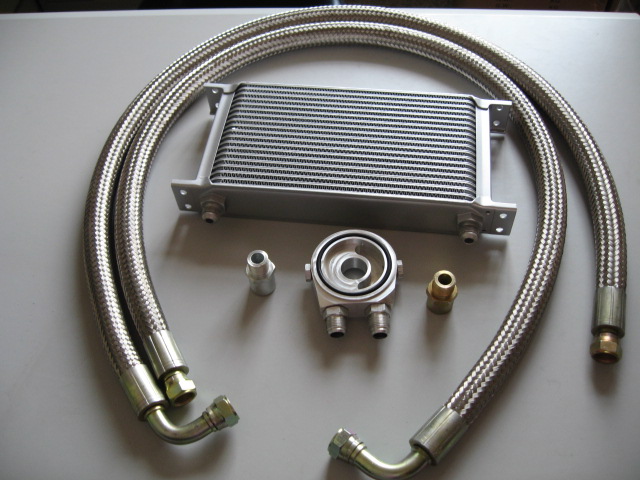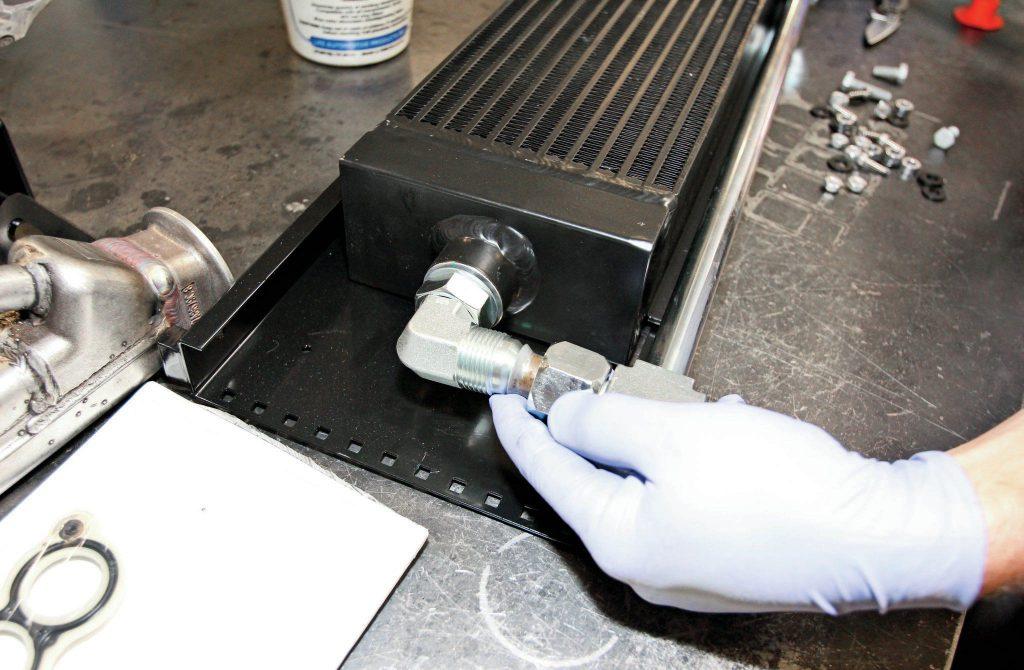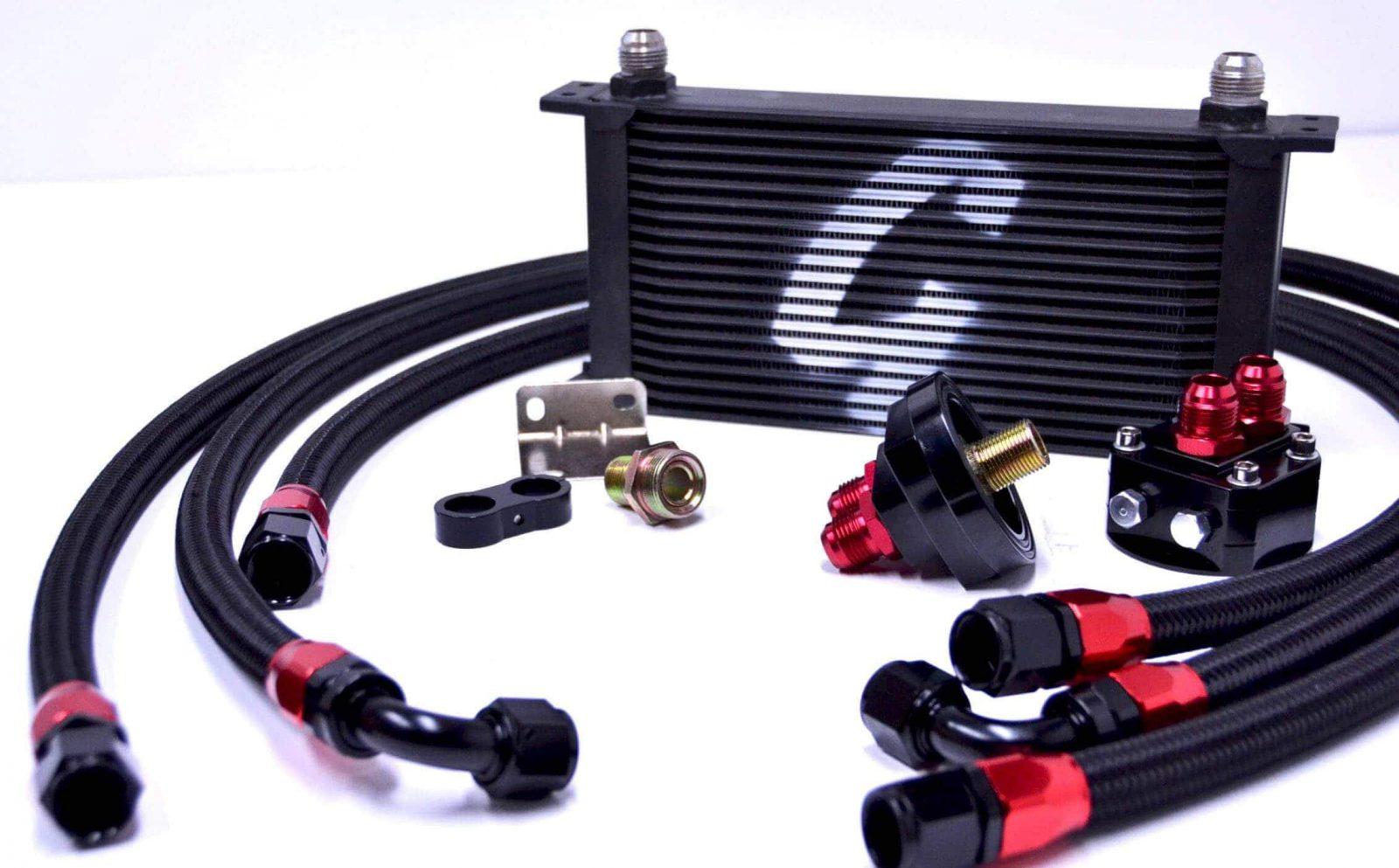Oil cooler is a small device placed in the radiator design of the vehicle. As the name suggests, its function is to cool down the temperature of oil entering the engine.
By this, it assists in maintaining the optimal temperature and viscosity of the fuel before being used for lubrication of engine and transmission.
Moreover, its significance in the motorable vehicle has made it essential to ensure its proper installation in the vehicle.
And, to check its setup, it is critical to understand the basics and how to install engine oil coolers!
Contents
Systematic Installation of Engine Oil Coolers
Before commencing with the installation of the engine oil cooler, it is vital to understand that if this small radiator is not installed carefully then, it may also lead to the engine failure.
Tip: The position of the engine oil cooler should not be near or next to exhaust components, thrown gravel, ice, water, or road grime.
Required Parts For The Engine Oil Coolers Installation
In order to ensure the proper and smooth installation process, make sure that you are equipped with the following mentioned tools.
- Oil Cooler with Barb Fittings
- O-ring (One each of two different sizes)
- Sandwich Adapter
- Instruction Sheet
- Oil Hose, Neoprene
- Adapter Plate
- 2 Hose Adapter Fitting
- 5 Mounting Nuts
- Pipe Thread
Apart from this, the hardware installation kit (each with the quantity of four) comprises:
- Nylon Washer
- Push Nut
- Mounting Bolt
- Rubber Spacer
Note: The dimensions of each component vary as per the size of the vehicle in which the engine oil cooler is installed.

How To Install Engine Oil Coolers?
To start with, check the sharp edges in the work area and make sure that you do not expose the oil hose to the hot surface.
Also, keep the length of hoses longer than the taken measurements and always use pipe thread in all the fittings. However, it is suggested not to over-tight the fittings.
Decide the Mounting Location
For the best location of the motor oil cooler in the system, it is advised to install it, where it will receive the most of the cool air from the vehicle fan and motor.
Inspection of Filter
First, insert the sandwich adapter’s depth into the oil filter in order to confirm its clearance.
In case, there is not enough clearance in the filter then, its remote mounting is done or a short filter is used. Here, the short filter’s thread must adjust the adapter.
Mount the Engine Oil Cooler
Step 1
Install the pipe thread fitting into the sandwich adapter and the cooler. Next, just place the engine oil cooler (do not fit yet) where you want to install it.
Step 2
Coat the oil of the engine onto the O-ring seal of the sandwich adapter.
Step 3
Then, with the right-colored ring, insert the adapter and tighten it in the cylinder block over the adapter.
Step 4
Next, for the routed hose, make sure to position all the fittings on the sandwich adapter and toughen the nuts on it.
Step 5
Followed by this, cut the hoses more than the rough length and insert it in the cooler with 90o turns or with greater radius. By this, it would allow for the easy flow of the oil through the cooler.
Step 6
Use two wrenches. With one support the cooler and with another, affix the bolts on it. In addition to it, use an electric drill for the insertion of bolts.
Step 7
Place and attach all the fittings on the engine oil coolers.
Test the Installation of Engine Oil Coolers
To test the oil coolers, start the engine and look for the oil pressure and oil cooler radiator in the system.
If both ends of the cooler are warm after a certain time, this confirms the proper installation of it. Or else troubleshoot the problem and re-concern the instruction guide.
Hence, after knowing how to install engine oil coolers, if this system is checked regularly then, it is also easy to follow its maintenance over a longer period.

FAQs on Engine Oil Coolers
Can an engine oil cooler improve fuel efficiency?
In some cases, yes. By maintaining optimal engine temperatures, an oil cooler can improve engine efficiency, especially in high-stress situations like towing!
Are there any maintenance requirements for engine oil coolers?
Routine maintenance includes checking for leaks, ensuring hoses are secure, and cleaning the cooler’s fins to remove debris that may hinder airflow.
Can I use an aftermarket oil cooler on any vehicle?
While many vehicles can benefit from an aftermarket oil cooler, compatibility depends on factors like the vehicle’s make, model, and engine type.
Is an engine oil cooler necessary for daily driving?
For typical daily driving in moderate conditions, an engine oil cooler may not be necessary.
It’s more beneficial for vehicles under heavy load, in extreme heat, or for performance applications where oil temperature control is crucial.
Are there any considerations when installing an engine oil cooler?
While engine oil coolers offer numerous benefits, they can add extra weight, cost, and complexity to your vehicle.
Improper installation or choosing an oversized cooler can lead to overcooling and affect engine performance.
Additionally, oil cooler placement can impact airflow to other essential components like the radiator, affecting the engine’s cooling system.
Therefore, carefully plan the installation and choose the right engine oil coolers for your needs and vehicle.
Check out this video from Donut to find out more whether the oil cooler is necessary!
Final Words
So here is how to install engine oil coolers quickly and effectively you can opt for anytime soon.
Hope you find this piece of information helpful and see you next time in an another insightful Car maintainance tips article!




I’m restoring a japan car – daihatsu charade a 2 door 94 model (3cylinder engine) I am planning to mount an engine oil cooler to help preserved its old engine, is an AN10 oil filter sandwich is the right fitting for a daihatsu charade?? its still not running since I still need to replaced the carburetor with a 4k 5k carburetor used for toyota’s. and also replaced ignition coil with a dry diamond type coil. I would like to get ideas, suggestion and opinions from people who really made this project car of mine, where the car really originated from. I would like to send pictures mostly are my DIY’s but moving forward I will et assistance from local car mech’s.